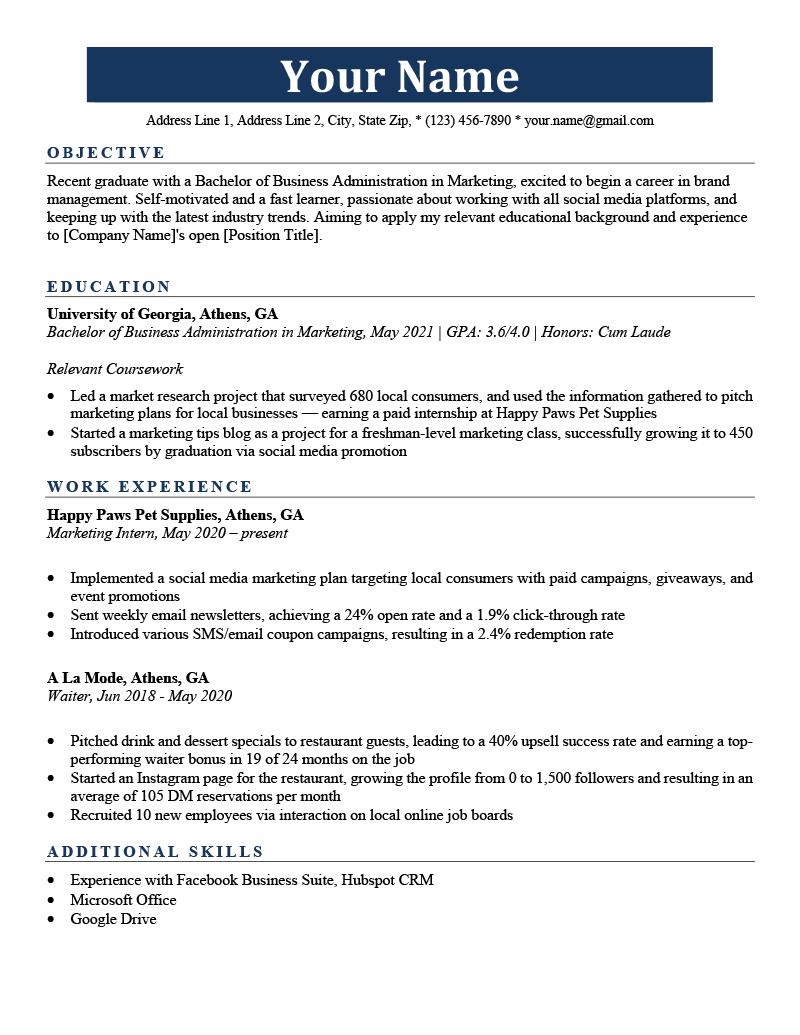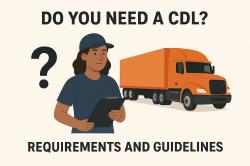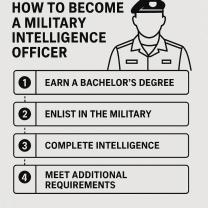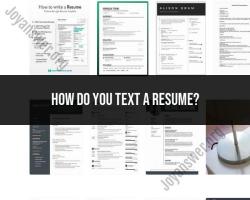What "experience" should I put in my resume?
Crafting an effective resume involves showcasing your professional experience in a way that highlights your skills, accomplishments, and suitability for the desired position. Here are some best practices for describing professional experience on your resume:
Relevance to the Job:
- Tailor your resume to the specific job you're applying for. Focus on experiences that are most relevant to the position, emphasizing skills and achievements that align with the job requirements.
Chronological Order:
- Present your work experience in reverse chronological order, starting with your most recent or current position. This makes it easy for employers to see your career progression.
Consistent Formatting:
- Maintain a consistent format for each entry in your work experience section. Include the following details for each position: job title, company name, location, dates of employment, and a brief description of your responsibilities.
Quantify Achievements:
- Use specific metrics and achievements to quantify your impact in previous roles. For example, mention sales figures, project completion times, or any improvements you contributed to.
Action Verbs:
- Begin each bullet point with a strong action verb to describe your responsibilities and accomplishments. Action verbs convey a sense of proactivity and achievement. Examples include "implemented," "managed," "led," and "developed."
Highlight Skills:
- Identify and highlight key skills developed during each position. These can be both hard and soft skills relevant to the job you're applying for.
Focus on Results:
- Emphasize outcomes and results rather than just listing duties. Demonstrate how your contributions had a positive impact on the organization or projects.
Tailor Descriptions:
- Customize your job descriptions to reflect the language used in the job posting. This helps to demonstrate that your experiences align with the employer's expectations.
Include Relevant Projects:
- If applicable, include specific projects you worked on and briefly describe your role and contributions. This can provide additional context to your skills and experience.
Show Career Progression:
- Clearly demonstrate your career growth and progression. If you've taken on increasing levels of responsibility or moved into leadership roles, highlight these advancements.
Avoid Redundancy:
- Avoid redundancy in your resume by focusing on unique aspects of each role. While certain responsibilities may be similar across positions, emphasize what makes each experience distinct.
Include Relevant Certifications and Training:
- If you've gained certifications or completed relevant training during your positions, include this information in the education or skills section of your resume.
Remember to keep your resume concise and focused on the most impactful aspects of your professional experience. A well-crafted resume effectively communicates your qualifications and makes a compelling case for why you're the right fit for the job.
What type of "experience" is appropriate to include in a resume?
Here is a short story in English without images:
The Last Tree
In a world where trees had been cut down for centuries, there was one last tree standing. It was a towering oak tree, with a thick trunk and wide branches. The tree stood in a small clearing, surrounded by barren land.
The tree had seen many things in its lifetime. It had seen the rise and fall of civilizations, the birth and death of stars. It had seen the world change from a lush and green place to a barren wasteland.
The tree was lonely. It missed the company of other trees. It missed the sound of birds singing in the branches. It missed the feeling of the sun on its leaves.
One day, a young boy came to the clearing. He was lost and scared. He had been walking for days, and he was tired and hungry.
The boy saw the tree and sat down at its roots. He was tired, and he fell asleep.
The tree watched the boy sleep. It felt a sense of compassion for the boy. It wanted to help him.
The tree reached down and touched the boy's forehead. The boy woke up and saw the tree.
"Hello," said the boy. "What are you?"
"I am a tree," said the tree. "I am the last tree in the world."
The boy was surprised. "The last tree?" he asked. "How is that possible?"
"People cut down all the other trees," said the tree. "They needed the wood for their homes and their fires."
The boy was sad. "That's so sad," he said.
"Yes, it is," said the tree. "But I am still here. And I will always be here for you."
The boy smiled. "Thank you," he said. "I'm glad I found you."
The boy and the tree talked for a long time. The boy told the tree about his life, and the tree told the boy about the world.
The boy felt safe and happy with the tree. He knew that he would never be alone again.
The boy stayed with the tree for many days. He learned a lot from the tree, and the tree learned a lot from the boy.
One day, the boy had to leave. He was sad to go, but he knew that he would never forget the tree.
The boy promised the tree that he would come back to visit.
The tree waved goodbye to the boy. It knew that it would miss him, but it was also happy that he had found a new home.
The boy walked away, and the tree watched him go. The tree knew that it would never be the same without the boy, but it was also glad that he had found a new home.
The tree stood in the clearing, alone but not lonely. It knew that it would always be there for anyone who needed it.













